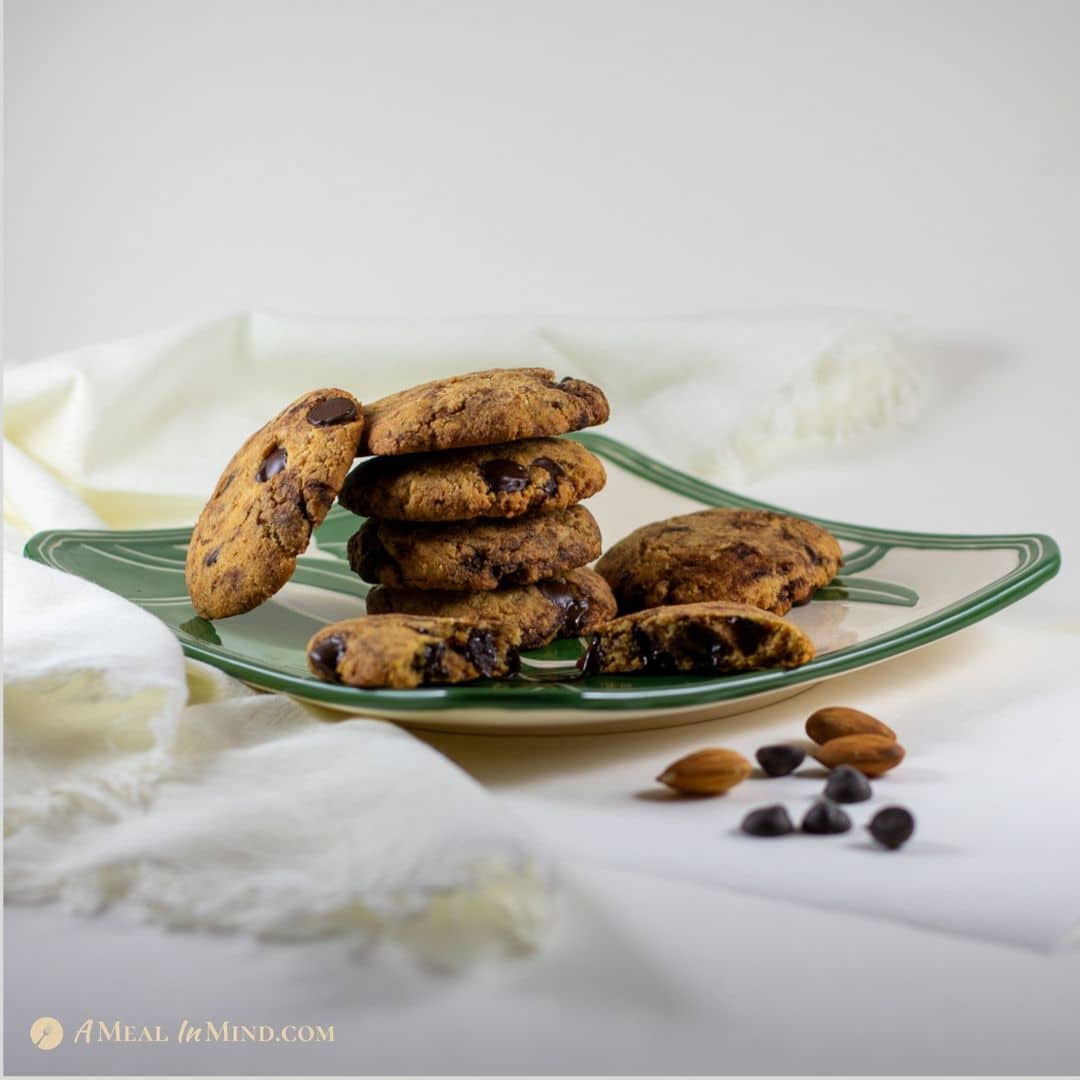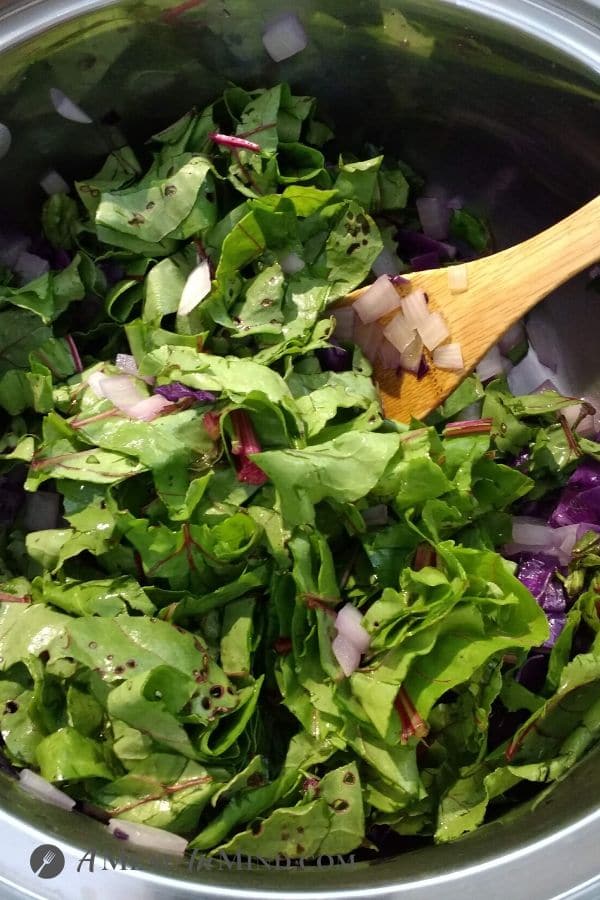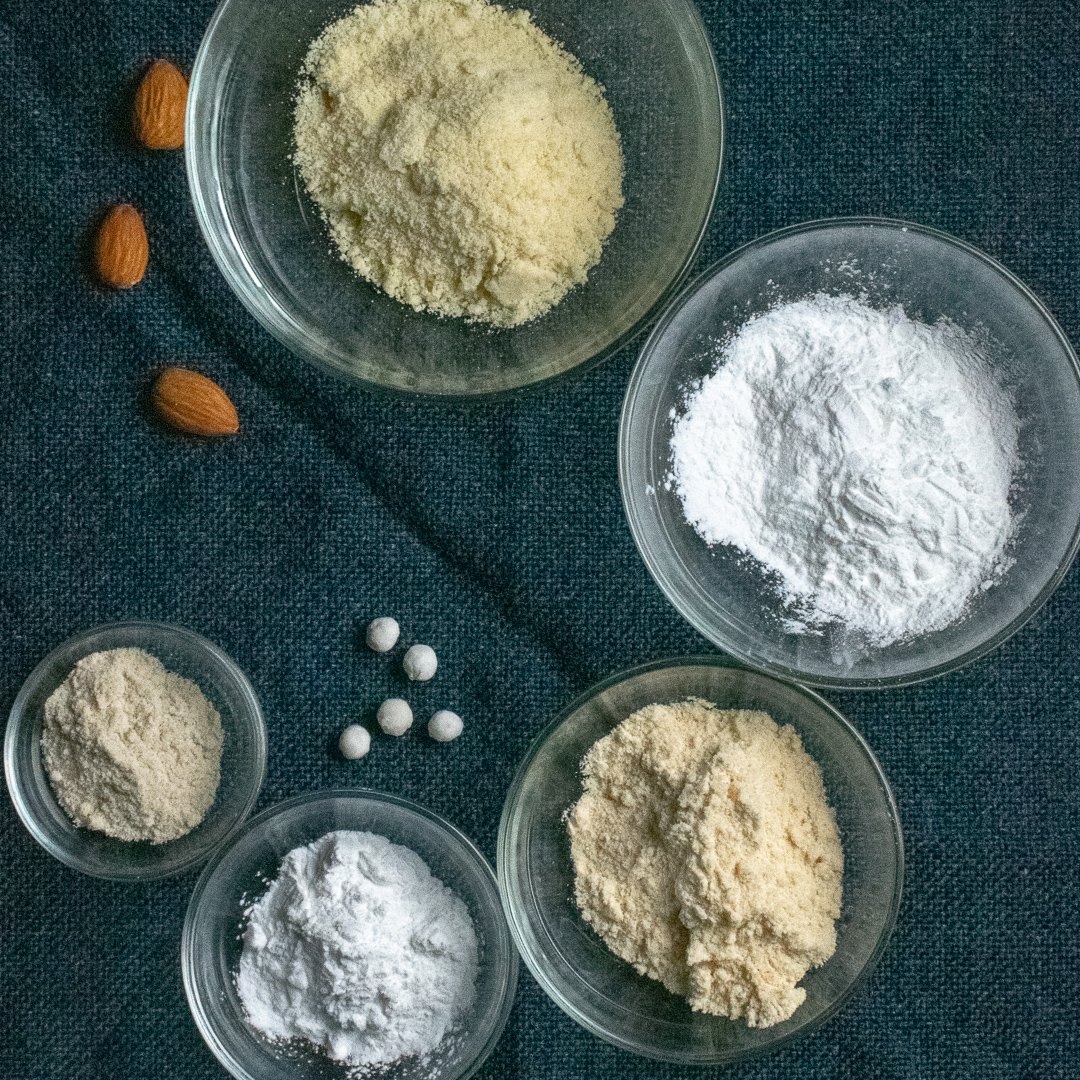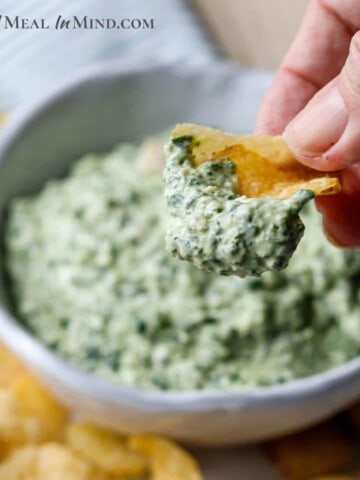Have you been converting old favorite baking recipes to gluten-free? The easiest fix is to substitute gluten-free flours. But are you avoiding gluten-free processed foods? If not, it's possible to end up with something that is no more healthy than your wheat-flour original.
There are more and more desserts on A Meal In Mind all the time - you've asked for them, dear readers, and so have my family! I go back and forth between wanting to create fun recipes for any occasion and their healthy counterparts. I strive for a balance (and do like a good bar of chocolate).

I’ve tapered off my own desire for sweets by just using less and less sugar in tea or in baking (this took years, though) and my recipes show it. I’m sensitive to taste and could never stand any of the artificial sweeteners, so reducing sugar was the best bet. But the flours are important too.
I use whole ingredients whenever possible. My recipe for fruit-sweetened muffins, though, used a packaged gluten-free flour because, well, it was available and quick to use. You can bet I will be revising that based on my research here!

References for information on gluten-free processed foods
This post is based largely on a recent blog post by Dr. William Davis, author of The Wheat Belly. So who are the "bad guys" of baking? Cornstarch, rice flour, tapioca starch, and potato starch. (That soft noise you hear is me shuffling over to my baking drawer and sneaking out the gluten-free baking mix. Keep or toss?).
If you want to read his points in the original, go here.
Other authors are worth citing here, even if their focus is not necessarily warning against these gluten-free products.
- Melissa Hartwig (Whole 30).
- Dr. Kathleen DesMaisons, the author of Potatoes Not Prozac, a book on sugar sensitivity which explains the connections between blood sugar and mood. She includes a simple but thought-provoking tool called the Carbohydrate Continuum.
Why to avoid these processed foods (or others that have a high net carbohydrate level)
- Gluten-free processed foods (GFPF) raise blood sugar higher than all other foods, including wheat. This is an absolutely key point. Note that almond meal and coconut flour are “good guys” as their net carbohydrate is quite low. This chart is adapted from here:
| Flour type | Net Carbohydrate in % |
| Almond meal | 11 |
| Coconut flour | 26 |
| Quinoa flour | 57 |
| Oat flour | 59 |
| Whole Wheat flour | 60 |
| Brown rice flour | 74 |
| Potato flour | 77 |
| White rice flour | 78 |
| Arrowroot flour | 85 |
| Tapioca starch | 88 |
| Corn starch | 90 |
2. GFPF cause insulin resistance. That point follows on #1. High blood sugar triggers a rise in insulin. Over time this produces insulin resistance, which can be a precursor to diabetes.
3. GFPF can reactivate celiac disease and gluten-intolerance reactions. Worst culprits are the corn protein zein (often remaining in cornstarch) and wheat germ agglutinin remaining in rice flour.
4. GFPF provoke the formation of small LDL particles. These small LDL particles are the real cause of heart disease, not cholesterol.
5. GFPF raise fasting triglycerides. When your blood sugar rises, your liver is triggered to convert sugar into triglycerides in the bloodstream. Next step is that #4 occurs.
6. GFPF amplify postprandial lipoprotein abnormalities. OK, that’s a mouthful. The take-home is that consuming gluten-free processed foods causes the release of VLDL particles, among others. VLDL contain more triglycerides than LDL do. See #4 again.
7. GFPF cause fatty liver. Rising blood triglycerides (see #4 yet again) cause more triglycerides to become trapped in the liver. Fatty liver can lead to cirrhosis. Terrifying!
8. GFPF alter bowel flora. The rise in blood sugar makes your intestine a happy home for bacterial overgrowth, or SIBO. Dr. Davis mentions increased risk for autoimmune conditions, fibromyalgia, IBS and other serious conditions.
9. GFPF cause tooth decay. Follows on #1 due to the blood sugar rise.
10. GFPF accelerate aging. When blood sugar rises (see what I mean that it all follows on #1?) proteins in the body are damaged (this is called glycation). One example of the result is damage to cartilage, resulting in arthritis.
11. Recreating or buying sweets, treats, and foods-with-no-brakes (even if the ingredients are technically compliant) is totally missing the point of the Whole30, and will compromise your life-changing results.
12. An increase in blood sugar triggers the release of beta-endorphin, a feel-good brain chemical. This sounds good except that when the blood sugar drops again the person craves more sugar to raise the beta-endorphin again. (Potatoes Not Prozac). And here you could loop back to Point #1 again. Phrased another way by these authors, low-glycemic foods (now more often called low-net-carb foods) also can reduce your risk for depression. Wow!

What to eat??
- Lots of vegetables
- Fruit, especially ones with high fiber content (so less impact on blood sugar)
- Lean proteins (meats or plant-based options)
- Good quality oils, like coconut, avocado, olive and flax
- Baked goods with almond and coconut flours (unless on a Whole 30)
- Legumes (unless on a Whole 30)
- Whole grains (unless on a Whole 30)
- Other foods in moderation!!

And last - read labels, or if possible, buy food that doesn't come with labels! This is the least processed food there is.
Beth
Print source:
Potatoes Not Prozac, by Dr. Kathleen DesMaisons. Simon & Schuster, New York. 2008.
Some of the links in this post are affiliate links. This means that if you click on the link and buy an item after doing so, I may earn a commission at no extra cost to you. This helps me support my blogging work.



















Leave a Reply